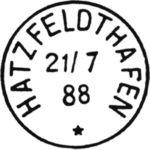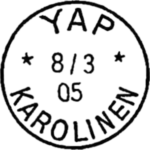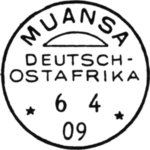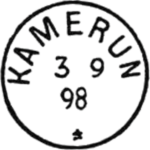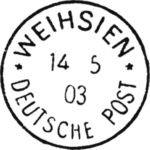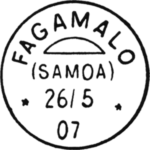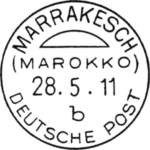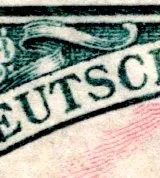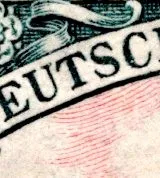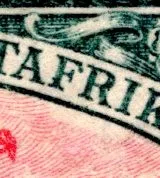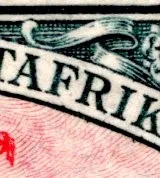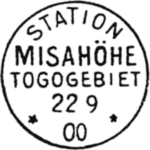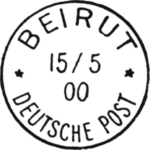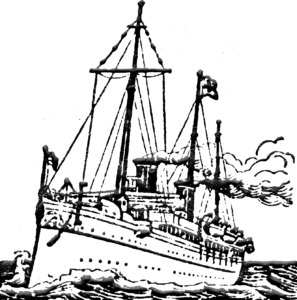
Beginners Guide
An Introduction to German Colonial Philately
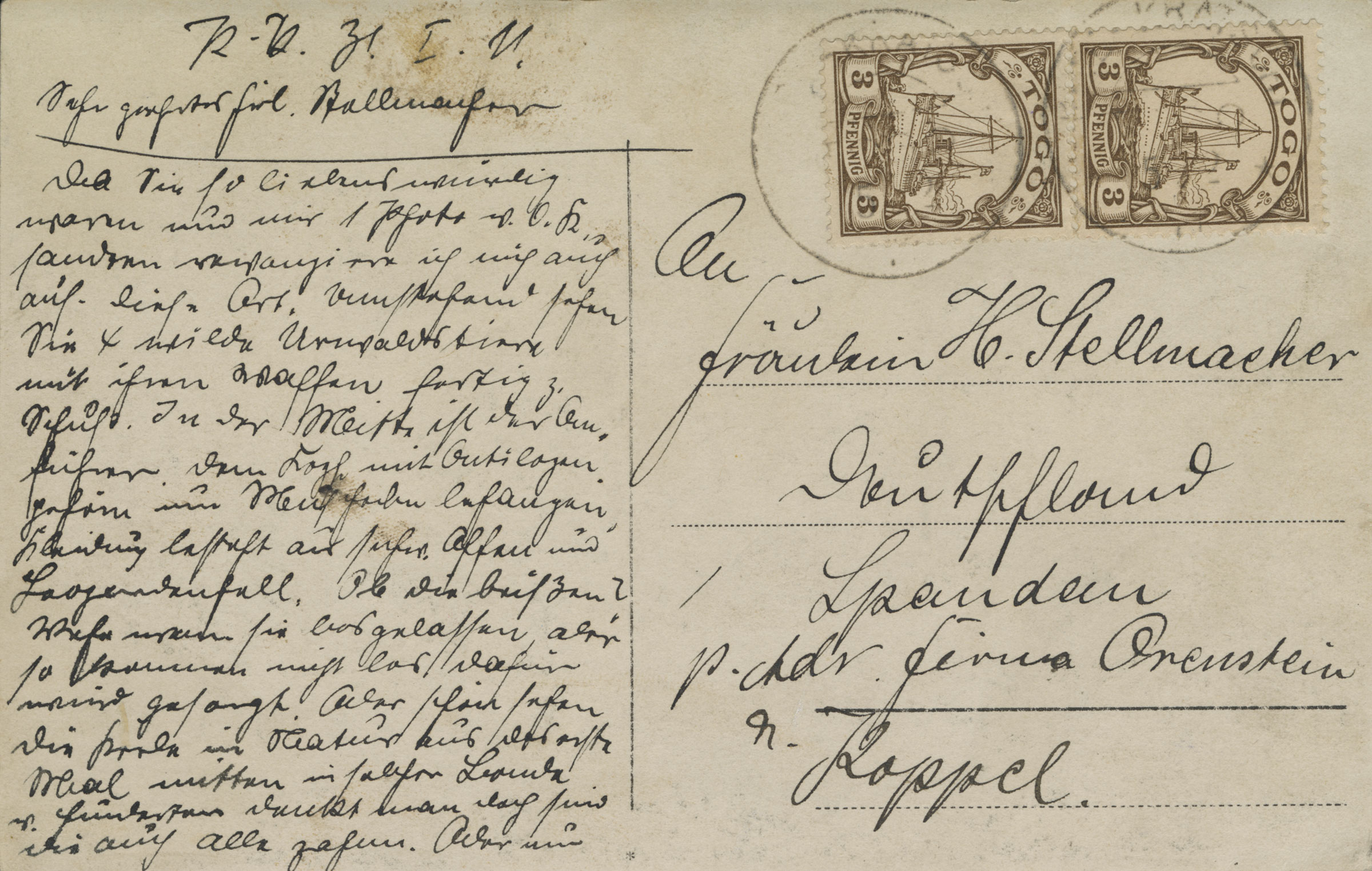
Kete-Kratschi, Togo, 5 February 1911
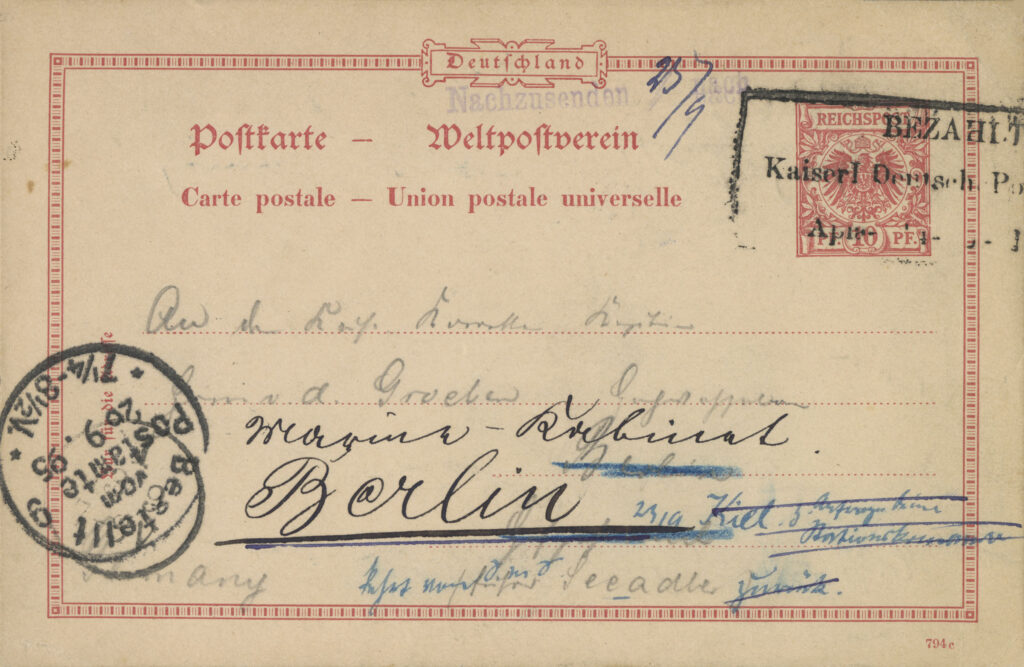
Apia, Samoa, 14 August 1895
Welcome!
This basic guide to collecting the German Colonies and Post Offices Abroad is courtesy of Gannon Sugimura, assistant editor of our journal, Vorläufer.
We hope you find it educational. If you’d like to learn more, consider joining the GCCG so you can get access to our biannual journal, Vorläufer, and to the thousands of informative articles, photos and research contained in our archive of over 50 years of back issues. Memberships are as low as US$10/year.
For Those Who are New to German Colonial Philately
Welcome to the world of German colonial philately! Our particular corner of the philatelic world deals with the postage stamps of the ten colonies and three overseas postal networks operated by the German Empire beginning in 1870 and ending with the First World War in 1919. This information is designed to introduce anyone with an interest in this area with some of the background of its postal history, key vocabulary and unique variations. Enjoy!
Vorläufer
Vorläufer and Mitläufer
In the case of the majority of the colonies and offices abroad, Vorläufer are typically stamps of the German Empire that were placed in use before distinctive colonial stamps were issued. A few exceptions do exist. The colonies in the Mariana and Caroline Islands, as well as the post offices in Morocco, had distinctive issues from the first day of postal operations, so there are no Vorläufer known for these areas. Kiautschou Vorläufer are usually stamps of the German Offices in China, but can also be stamps of Germany proper. An example of a Vorläufer from German Southwest Africa (see left) shows an otherwise ordinary German 2 Mark stamp from the 1890s with a cancel applied at the GSWA post office at Keetmanshoop.
The term “Mitläufer” has no direct translation in English, but means approximately “concurrent use” or “tolerated franking.” In the German colonial context, it refers to a stamp of Germany proper accepted as valid at a colonial post office or an office abroad, despite the availability of a local issue. The colonies accepted any stamp valid in Germany as a proper franking, in small quantities, for as long as Berlin remained in control of that colony. Some were created when someone happened to bring German stamps with them to a colony, particularly in the case when a German military vessel happened to call on a port in a German colony. Most were likely to have been created when German stamps purchased before distinctive issues appeared were used up in the course of ordinary postal business. Whatever their origin, Mitläufer are typically encountered in smaller quantities than Vorläufer.
Collecting both Vorläufer and Mitläufer requires obtaining used stamps and knowledge of dates of use. A stamp may have been purchased at a colonial office or a post office abroad, but unless it was also used there, there is no way to absolutely determine this fact. Additionally, determining whether a stamp is a Vorläufer or a Mitläufer requires a clear postmark date to determine whether it was used before or after a colonial replacement was issued. The scan of a Mitläufer (middle image below) shows a clear cancel from Swakopmund, GSWA, applied on 30 July 1898. This stamp was used in GSWA nearly a year after a distinctive stamp with overprint (see bottom right image) was issued in July 1897, making the 1898 usage a Mitläufer.
This can be somewhat complicated for colonies that issued different stamps issued at different times. In the case of Kiautschou, for instance, the first issue produced for that colony was a 5-pfennig stamp created as a local surcharge on a German Offices in China (GOC) 10 pfennig stamp. This surcharged issue was placed on sale on 9 May 1900. To specialists, any GOC or German Empire 5 pfennig stamp used in Kiautschou after that date is a Mitläufer—but any example of the other six denominations available in Kiautschou on that same date continues to be considered a Vorläufer if used prior to the issue of the first “Yacht” stamps in Kiautschou in January 1901.
Vorläufer
Mitläufer
Colonial Issue
Overprinting
Many of the colonial and offices abroad stamps were created by overprinting contemporary German stamps. This was done by running sheets of stamps through a printing press which changed a stamp’s denomination, added an additional inscription, or both.
In the case of colonial issues, there was typically one overprinted issue where the name of the colony was overprinted diagonally over the face of the stamp. All of the stamps to which this overprint were applied are examples of the 1889 “Number / Eagle” definitive series. For those colonies with a second such issue, the only difference is the angle at which the overprint was placed. Issues for the Mariana islands, for instance, were placed either at 48 degrees or 52 degrees. All of these overprints are in black (as seen at right).
In the case of issues for the offices abroad, three major types of overprint occur. For China and Morocco, diagonal overprints on the 1889 issue were created (see left image below). On issues for Turkey, horizontal overprints were issued at the same time, but which were slightly different in ways which will be discussed in a description of that area. All of these overprints were in black.
Once the 1900 “Germania” series appeared, new overprints appeared for all offices, all of which were horizontal and were also in black. An exception to this was the overprint applied to the 3 Mark stamp, which was vertical, on both sides of the stamp, and in red ink. Stamps issued prior to 1905 had overprints in “Lateinschrift” (see middle image below). Issues for 1905 and after were overprinted in “Frakturschrift” (see bottom right image), an ornate Gothic font associated with German printing until the 1940s.
Additionally, the Frakturschrift overprints for China included small additional ornaments, called “rosettes” which were placed so as to cover up the stamp’s original denomination.
Handstamp overprints are encountered, but only as provisional or emergency issues. Stamps with handstamped overprints were issued in the Carolines, China, and Kiautschou.
“China” Overprints
Diagonal Overprints
Lateinschrift (Latin Script)
Frakturschrift (Fraktur Scriupt)
“Yacht” Stamp
The “Yacht” Series
The “Yacht” series was the first (and only) stamp design specifically produced for use in the colonies but not at the offices abroad. Stamps of this series all show an engraved image of the SMJ Neue Hohenzollern, the Kaiser’s Imperial Yacht and are generally thought of as a keytype series. Printed in Berlin, they match the colors and face values found on contemporary German stamps of the “Germania” series, except that some denominations were never issued for the colonies.
Stamps were issued in two sizes, identical to those in Germany. Those with a face value of less than 1 Mark are smaller than those of 1 Mark and greater, and these two sizes are sometimes referred to as “Small Yachts” and “Large Yachts” respectively. Small Yachts with face values up to 20 pfennig are single color (seen at left), while those from 25 pfennig to 80 pfennig have the ship vignette and the frame of the stamp printed in different colors, some on tinted paper of a third color, and with the colony name and denomination printed in black. Large Yachts are single color except for the high value of the series, which was had one color for the frame and another for the vignette.
Stamp Paper and Stamp Ink
The majority of German colonial stamps were printed on ordinary paper. Once distinct stamps were produced for the colonies and offices, stamp colors and printing features matched those of the stamps with the same denominations from Germany proper, as well as equivalent stamps from the other colonies that used the German mark as their currency. This included stamps printed on tinted papers, a feature that first appeared in 1900.
For those colonies that did not use the mark, stamp colors and papers matched as closely as possible whichever German stamp was closest in value to the colonial issue. For example, the $1/2 stamp issued by Kiautschou is the same shade of carmine as a German 1 Mark stamp, as both were equal in value. By contrast, the high values of German East Africa do not match the shades of any current German stamps, as there was no obviously equivalent value (1 rupie = 1,33 Mark).
Beginning in 1905, stamps began to be printed on watermarked paper. German colonial stamps that were not printed on ordinary paper were printed only on paper watermarked with a series of diamond lozenges.
This watermark is “Wz. 1 (Wasserzeichen 1) in the Michel catalogue and “Watermark 125” in Scott (see at right).
Watermarked Paper
Friedensdruck (left) and Kriegsdruck (right)
Kriegsdruck versus Friedensdruck
The terms Kriegsdruck (war printing) and Friedensdruck (peace printing) are routinely used for stamps issued around the time of the First World War. All German colonial stamps printed on ordinary wove paper are Friedensdruck. For the smaller colonies, the ordinary paper printing of 1900 was large enough that watermarked issues were never issued before the First World War. For the larger colonies, watermarked Friedensdruck printings were made of some denominations, typically the ones which saw the most use. Watermarked Friedensdruck printings of 5 pf and 10 pf stamps were made for every colony that issued any watermarked stamps before the war, for instance.
Kriegsdruck issues, by comparison, exist only on watermarked paper. Most were created in 1916 or later, and at a point when Germany had lost control of the colony in question. These stamps were presumably printed under the assumption that German colonial administration would resume once the war was over. As this never happened, genuine postal use of Kriegsdruck issues is typically impossible. The Allied blockade prevented the Germans from sending such stamps to their colonies, even in the event that they retained control. For nearly all colonies, Kriegsdruck issues were created for the high and low values of the series, i.e. the 3 pfennig and 5 Mark values. For the smaller colonies, these were the only Kriegsdruck stamps printed. Larger colonies may have had other values produced, based on projected, post-war demand.
Distinguishing Kriegsdruck from Friedensdruck can be more of an art than a science. Few absolute statements can be made regarding their differences. In general, Kriegsdruck stamps have darker, more drab colors, and were printed with blurry, unclear, or broken impressions from plates that were wearing down. The paper is typically rougher, and the watermark may also be blurry. For unused stamps, the gum is typically more yellow and has a high gloss. Friedensdruck stamps have clean, clear impressions, are well printed, and have brighter colors. The watermarks are always clear, and the gum (for mint issues) is whiter and has a more matte finish. In the case of higher values (especially the 5 Mark value) there are specific printing and perforation varieties that occur only with Kriegsdruck and can sometimes increase their value.
At left are examples of Friedensdruck and Kriegsdruck front and back respectively.
Perforation Varieties
Generally speaking, most Kriegsdruck high values (1 Mark and higher, or equivalent) occur with Michel type B perforations, while some Kriegsdruck and all Friedensdruck have Michel type A perforations. The difference is very small but can also be very valuable for some varieties.
While technically of the same gauge, type A perforations have 26 perforation holes across the top and bottom of the stamp and 17 perforation holes at left and right. These are also referred to as “26:17” perforations. Type B, in contrast, has 25 perforation holes across the top and bottom instead of 26 perforation holes, and are also known as “25:17” perforations.
Most colonial Kriegsdruck of the higher values that were produced exist with both types of perforations, and this leads to a relatively small difference in value between them, with Type A perfs valued between €5 and €15 more than type B for hinged 5 Mark stamps. But for some colonies, some issues with Type A perfs can be worth significantly more than Type B perfs, particularly for never hinged examples. The German East Africa 3 rupien with 26:17 perfs (Michel 39 II A) has a CV of between €400 and €700 for a never hinged example based on shade. The same stamp with 25:17 perfs (Michel 39 II B) is valued at €160 in never hinged condition.
26:17 Perforations
Vignettes & Frames
The high value of the “Yacht” series was always printed in two colors: with one color for the frame and the other for the vignette. There were three types of frame and vignette used for printing this value. The main differences between the various types of vignette and frame can be found in the scroll at the top which shows the colony’s name, as well as the shells in the lower corners showing the denomination.
The scroll at the top of the frame shows a single, unbroken arc for the colony name, and was used for colonies with longer names. The upper arc of the vignette for Type 1 is also unbroken and lines up with the bottom of the scroll. Three colonies (German New Guinea, German Southwest Africa, and the Marshall Islands) had 5 Mark stamps with Type 1 frames and vignettes (below left).
Type 2 frames and vignettes were used for colonies with shorter names. The scroll at the top of the stamp that shows a name shows an additional “fold” in the scroll at both left and right, with these folds projecting down into the vignette. In order to allow for this, the Type 2 vignette has two “bites” where the engraved lines of the clouds were removed, to keep the scroll work and the engraving illustrating the clouds from overlapping. The high values of the Yacht issue were issued with Type 2 vignettes and frames for all colonies except for German East Africa and the three that issued Type 1 stamps for this value (below right).
Type 1
Type 2
Type 3 vignettes and frames were prepared only for the 3 Rupien stamps of German East Africa. Type 3 is essentially identical to Type 1, except that the shells showing the denominations on Type 3 are slightly larger than on Type 1. This was necessary as the value “3 Rupien” took up more space than the corresponding value “5 Mark” on the Type 1 issues, requiring the larger shells.
For all pre-war printings, the frame and vignette types were properly matched for each colony. But for some of the printings produced during the war, the stamps were produced so quickly that some 5 Mark stamps for New Guinea, South West Africa, and the Marshall Islands were printed with mismatched frames and vignettes. German New Guinea was the only colony where all three types of vignettes were used for different print runs, and of these, the combination of a Type 1 frame with a Type 3 vignette is the most valuable. The CV of the Type 1 frame with a Type 1 vignette is €180 versus €140 with a Type 2 vignette and €2200 for a Type 3 vignette (all in never hinged condition; significantly less in hinged).
German Southwest Africa and the Marshall Islands both had the combination of Type 1 frames with Type 2 vignettes in addition to Type 1 vignettes and frames. This created two “bites” in the clouds below the band with the colony’s name on it, which appears as two small, white spaces amid the red clouds as can be seen in the top row below.
The bottom row below shows the correctly paired Type 1 vignette and frame.
Mismatched Types (top) & Matched Types (bottom)
Seepost
In German philately, special terms exist for postmarks and facilities that could travel. In German colonial philately, two of these apply: Seepost and Bahnpost. Seepost facilities were those which existed aboard ships, while Bahnpost facilities existed aboard trains. Each had distinctive postmarks and associated with them, and are highly collectable in their own right.
Seepost cancels can be found on nearly all German colonial issues. All of the German colonies had a sea coast, and most relied on ships to transport mail between the colonies and to / from Germany at one point or another. Most Seepost cancels show the name of the ship line on which they were applied. This was particularly true in the Pacific; these shipping lines could be the primary link between the colonies and the outside world. Examples of lines with colonial connections include the New Guinea line (as seen above) and the Jaluit line. Although individual colonies did not have their own Seepost markings, the German Offices in China did operate Seepost facilities between Shanghai and Tientsin, to speed up mail deliveries between different parts of China.
Seepost Postmark
Bahnpost Postmark
Bahnpost
Bahnpost, on the other hand, was a bit more limited. The most extensive German-built railroads were installed in German Southwest Africa, German East Africa, and Kamerun (as seen above). The other colonies did not have any rail facilities except for Kiautschou. The Germans built a railroad in China’s Shandong (formerly Shantung) province connecting the city of Weihsien in China with the Kiautschou colonial capitol at Tsingtau, which would eventually provide rail connections between Kiautschou and Germany via Russia’s Trans-Siberian Railway. All of these used oval cancel devices similar to those used on board trains in Germany proper for the length of colonial administration, except in German Southwest Africa where the use of such cancels ended in 1903.
